The Yukon Quest is an expedition through the frozen gates of hell. Half in the Yukon and half in Alaska, the 1,600-kilometre dogsled race has earned a reputation for being the toughest in the world.

The distance between checkpoints is longer than the famous Iditarod, and the terrain is more challenging. The route follows a former gold-rush trail through four mountain passes and over riverbeds where the ice is as jumbled as a jigsaw puzzle.
The first team departed at 11 a.m., with the rest following at three-minute intervals. This year there are 21 teams, including four mushers new to the Quest. Only six mushers are Canadian, while most are from the U.S. A few are from Europe and Japan.
Sled Dogs
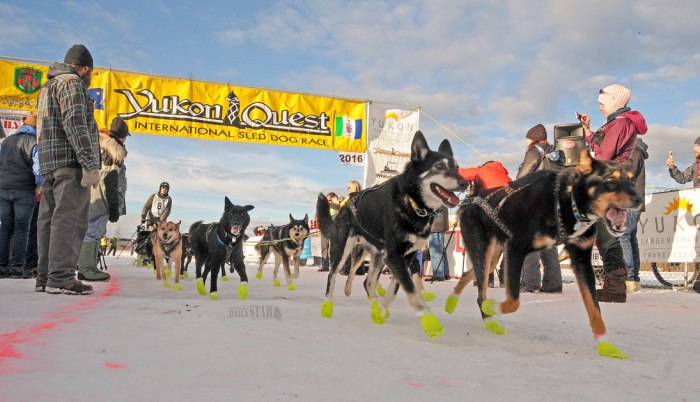
The Yukon Quest is powered by sled dogs. These incredible canine athletes are the heart and soul of this great race. Their ancestors made it possible for nineteenth century society to establish itself in the far North well over 100 years ago and eventually create the modern northern world we enjoy today.
Excellence in canine care is one of the founding principles of the Yukon Quest. The Quest is dedicated to educating, encouraging and demanding a high level of care for all sled dogs participating in the Yukon Quest.
Route
Whitehorse to Braeburn

The traditional starting line is in Whitehorse on First Avenue, near the former White Pass and Yukon Route train station, which today houses the Canadian offices of Yukon Quest International. Shortly after leaving the starting line, racers follow the frozen Yukon River north out of town.Crossing onto the Takhini River, mushers follow it northto the Klondike-era Overland Trail.Racers take the trail to Braeburn Lodge, the first checkpoint.
Bareburn to Pelly Crossing
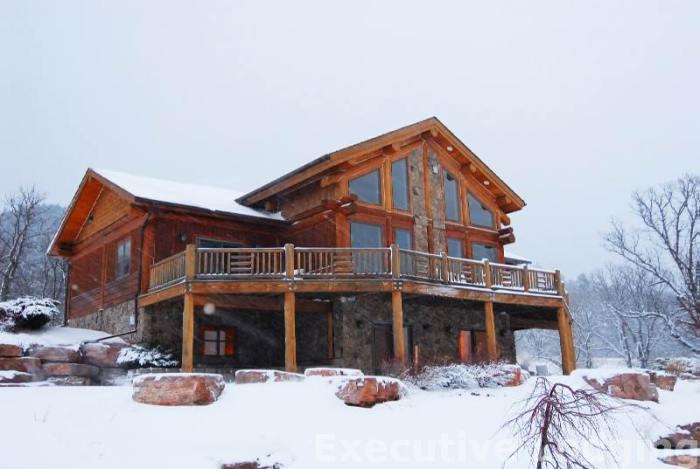
In the first leg of this, mushers must travel from Bareburn to Carmacks which is 39 miles (63 km). In odd years, mushers have the option of taking their four-hour rest here or at Bareburn. The three minute difference start time is also adjusted if the musher chooses to take their four-hour rest here.
Pelly Crossing to Dawson City
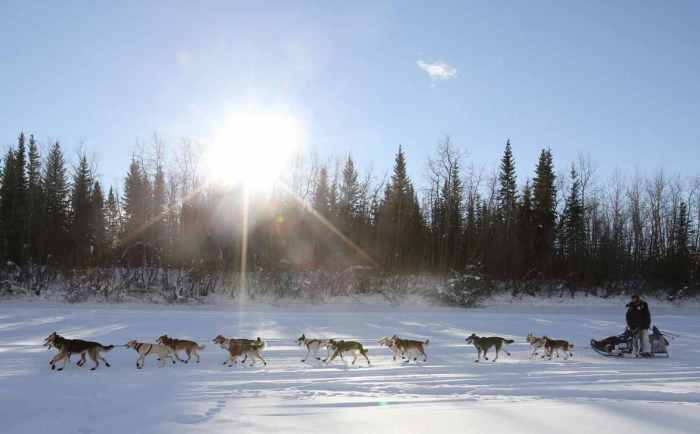
The stretch between Pelly Crossing and Dawson City is the greatest distance between checkpoints of any sled dog competition in the worldBetween the two sites are 201 miles (323 km) of open trail, marked only by a dog drop at Scroggie Creek, an abandoned gold-mining site activated only during the Yukon Quest.
Dawson City to Eagle

The distance from Dawson City to Eagle, the first checkpoint in Alaska for the Whitehorse–Fairbanks route, is 144 miles (232 km).Mushers must rest for four hours in Eagle. Racers exit Dawson City on the Yukon River and follow it for about 50 miles (80 km) to the Fortymile River hospitality stop.From the hospitality stop, mushers travel southwest on the Fortymile River in what is one of the coldest portions of the race, because of cold air sinking to the bottom of the river valley.
Eagle to Central
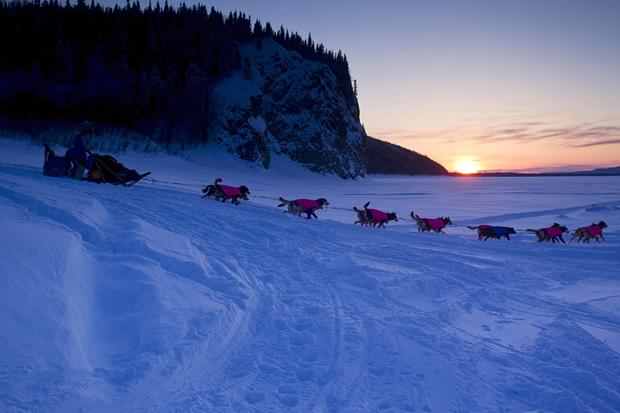
The route from Eagle to Central covers a distance of 233 milesn winter, Eagle is buffeted by high winds and drifting snow funneled through the town by nearby Eagle Bluff, which stands 300 feet (91 m) above the Yukon River Because it is the first stop in the United States, competitors are greeted at Eagle by a United States Department of Homeland Security official who checks passports and entry documents.
Central to Two Rivers
From Central to the final (or first, in the Fairbanks–Whitehorse direction) checkpoint in Two Rivers is 114 miles (183 km). Despite the After leaving Central, mushers head west, paralleling the Steese Highway, which connects Central and Circle with Fairbanks. The trail travels through frozen swamps, mining areas, and firebreaks for about 20 miles (32 km). Mushers then encounter the Steese Highway for a second time before crossing several creeks to begin the ascent of Eagle Summit.hey eventually climb above the tree line and are exposed to the wind as they continue upward. The weather atop Eagle Summit is harsh as this is a convergence zone between the Yukon Flats to the north and the low ground of the Tanana Valley to the south.
Two Rivers to Fairbanks
Two Rivers is the final checkpoint in the Whitehorse–Fairbanks route. Mushers are required to rest at least eight hours in Two Rivers in odd years to ensure the health of their dogs during the final leg of the race.
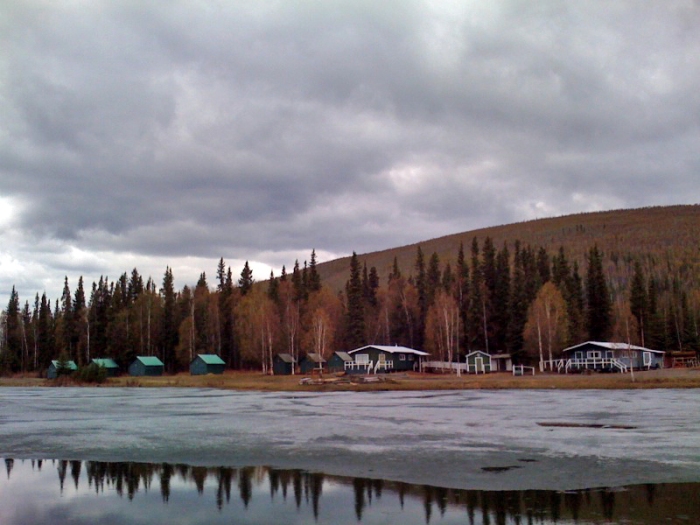
Beyond Two Rivers, the trail reaches the Chena River northwest of Fairbanks. This is the final stretch, and mushers use the river to enter Fairbanks and reach the finish line.



Beautiful pictures!
LikeLike